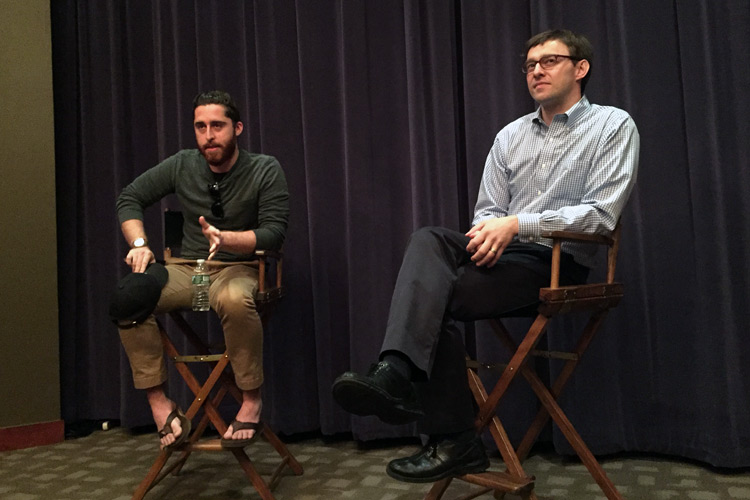The following questions and answers are excerpted from a conversation that followed the NBR screening of It Comes at Night.
Can you describe your writing process for this film?
Trey Edward Shults: It started when I wrote this in 2014, and it comes from a personal place of having a rough relationship with my biological father who suffered with addiction. Essentially our relationship was cut off— I hadn’t seen him in ten years and then he got pancreatic cancer. I went to him on his deathbed and he was so full of regret for the life he lead. I was just trying to help him find peace, so two months after that, I began writing this film. This film is basically how I was processing my grief. It started with that opening scene of Sarah speaking to her father, which is what I had said to my dad. I was in a very dark headspace throughout this process and this became a way for me to confront fears of the unknown, mortality, and all of this heavy stuff. We wrote the Krisha feature after this and then when A24 saw Krisha, they were on board to do this.
“We had Chris tied to a tree all day and a boom operator in the tree, which was wonky”
It’s interesting that you have the same crew from Krisha behind the camera and yet the result looks totally different. How did you design the visual style for this film?
Shults: I wanted to push myself as a filmmaker and flex different muscles. With this though, people come thinking of the film as a straightforward horror film, but I think it’s a more patient film than Krisha. Our film grammar was about subtlety. We’re still doing the nightmares with anamorphic lenses and changing aspect ratios, but the goal was for the audience to not notice that because they are completely immersed. Sound design and score have subtle changes so we feel them like Travis does and weren’t filmed to be scary, but to help us understand this kid more. And even though the nightmares have a different sound design than reality, everything converges once the nightmare becomes reality.
How did you design and plan the fire sequences?
Shults: Each sequence was approached with a different style that was meant to reflect something important about where Travis was on his journey. The first one is more immersive because he’s experiencing this for the first time and we were following him with the Steadicam. The second is him becoming numb to the situation, as he has lost the last remains of his grandfather and his best friend. It’s held back with a slow zoom and static shots. Beyond that, the pyro guys were fantastic, always trying to make it bigger. From a sound perspective, I wanted it to feel like the audience was right there in the low end of the fire.
Chris and Joel have this great role reversal in the film. Can you talk about directing their performances to achieve this effect?
Shults: For the interrogation scene at the tree, there is one cut in there. It’s a long take, and I had to cut once for performance. We had Chris tied to a tree all day and a boom operator in the tree, which was wonky. The goal of this scene is to feel that power dynamic going on and the shift. I had the Steadicam operator memorize lines to know when to go around and when not to. Obviously at the end we pull back and let them connect, but overall it was a fun and tricky scene.

